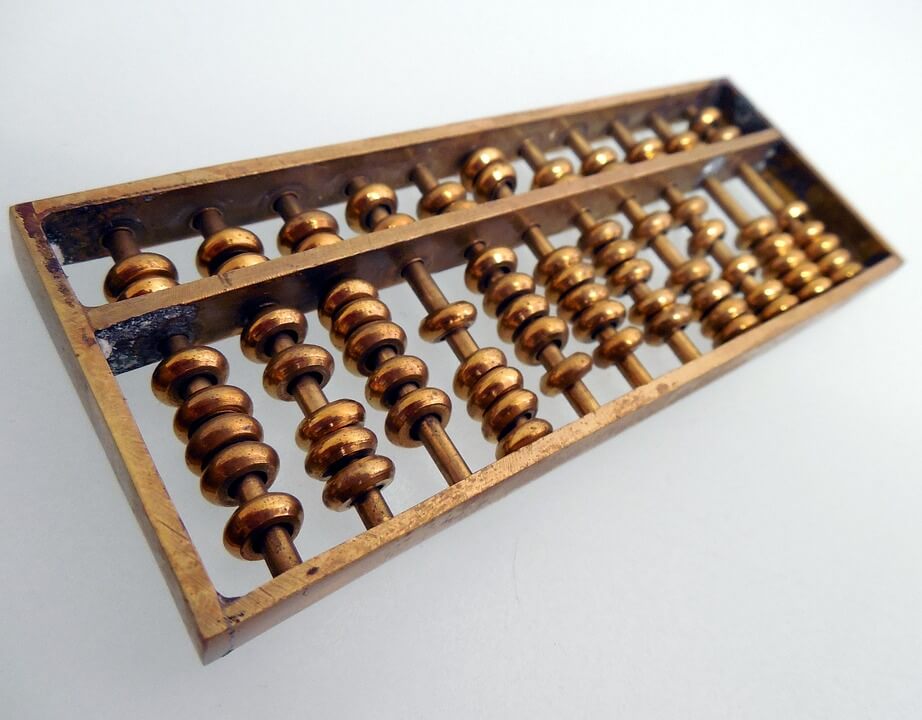What is an abacus? What is the use of the abacus, how to use it, the history of the abacus, information about the abacus in ancient times.
ABACUS, a device used to perform arithmetic operations such as addition, subtraction, multiplication, and division. The abacus has been used for thousands of years and has appeared in various forms in different countries. Small merchants in many countries stili use it to figure their accounts. In the United States and many other countries, arithmetic teachers often use it to give young students a better understanding of place value in the decimal system of numeration.
In its most widely used form, the abacus is a rectangular wooden frame with several parallel wires running across the width of the frame. Beads are strung on the wires and are used as counters. In a decimal system of numeration, the separate wires represent units, 10’s, 100’s, 1,000’s, and so on. On such an abacus, there are usually 10 beads on each wire, so that each bead stands for a unit of place value. Thus, each bead on the unit wire represents 1, each bead on the 10’s wire represents 10, and each bead on the 100’s wire stands for 100.

Source: pixabay.com
OPERATING THE ABACUS
Arithmetic operations are performed on the abacus by moving the beads from one side of the frame to the other. Thus, to set up the number 23, three beads on the unit wire would be moved to one side of the frame, and two beads on the 10’s wire would be moved to the same side.
Addition. To add the number 14 to the number 23 already set up on the abacus: Four more beads on the unit wire would be moved to join the three beads at one side of the frame. One more bead on the 10’s wire would be moved to join the two 10’s beads. Thus, the abacus would have three 10’s beads grouped together and seven units beads grouped together (14 + 23 = 37).
Subtraction. To subtract the number 16 from the number 37 set up on the abacus: Six beads would be slid away from the group of seven on the unit wire, leaving only one bead at the end of that wire. One bead would be moved away from the group of three beads on the 10’s wire, leaving two beads at the end of that wire. Thus, the abacus would have two 10’s beads and one unit bead grouped together (37 — 16 = 21).
Multiplication. Multiplication is performed on the abacus by repeated addition. Thus, to multi-ply 4 times 12: Two beads would be moved to one end of the unit wire and one bead would be moved to the end of the 10’s wire. This operation would be made a total of four times, so that in the end there would be four beads at the end of the 10’s wire and eight beads at the end of the units wire (12 x 4 = 48).
Division. Division is performed on the abacus by repeated subtraction. Thus, to divide 8 by 2: Eight beads are set up at the end of the unit wire. Then, two beads are subtracted. This is repeated until there are no more beads at the end of the unit wire. The user counts how many times he has to subtract until there are no more beads. He finds that he must subtract a total of four times (8/2 = 4).

Source: pixabay.com
HISTORY
The word abacus comes from the Semitic word ahg, meaning “dust.” This name came from the primitive form of the abacus, a board covered with fine dust. Among the Hindus it was a wooden tablet covered with pipe clay, upon which was sprinkled purple sand, the numerals being written with a stylus. This form was used by the ancient Greeks; Iamblichus asserts that Pythagoras taught geometry as well as arithmetic upon an abacus. Its use among the Romans of the classical period is also well attested.
The most common ancient form of the abacus, having many modifications, is a board with beads sliding in grooves or on wires in a frame. Herod-otus telis us that this instrument was used by the Egyptians and the Greeks, and we have evidence that the Romans also knew it, although they preferred a different form.
The abacus is widely used in India and ap-pears in the form of the suarı pan in China, the soroban in Japan, and the tschoty in Russia. The Chinese abacus has a separate division horizon-tally across the frame, below which units are counted up to five; the fives are transferred to the upper section, where each bead stands for five units.
Another form of abacus was a ruled table, upon which counters were placed, somewhat like checkers on a backgammon board; the game of backgammon in fact, was derived from this type of abacus. This form was the favorite one among the Romans, whose numerals were not at ali adapted to calculation, and it maintained its posi-tion in Europe throughout the Middle Ages and until the latter part of the 16th century. The Hindu-Arabic numerals then supplanted the Roman numerals, and the abacus as an aid to calculation was thought superfluous in western Europe.